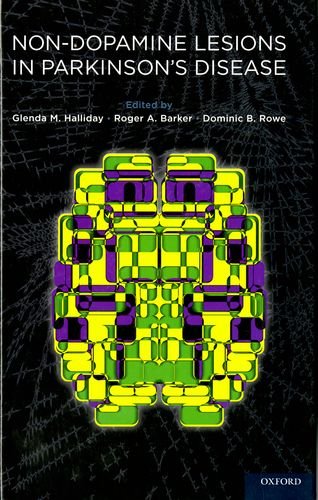ضایعات غیر دوپامینرژیک در بیماری پارکینسون ۲۰۱۰
Non-dopamine Lesions in Parkinson’s Disease 2010
دانلود کتاب ضایعات غیر دوپامینرژیک در بیماری پارکینسون ۲۰۱۰ (Non-dopamine Lesions in Parkinson’s Disease 2010) با لینک مستقیم و فرمت pdf (پی دی اف)
| نویسنده |
Dominic B. Rowe, Glenda Halliday, PhD, Roger A. Barker |
|---|
| تعداد صفحهها |
314 |
|---|---|
| نوع فایل |
|
| حجم |
4 Mb |
| سال انتشار |
2010 |
89,000 تومان
معرفی کتاب ضایعات غیر دوپامینرژیک در بیماری پارکینسون ۲۰۱۰
بیماری پارکینسون تنها پس از از دست دادن قابل توجه (بیش از 60٪) نورون های دوپامینرژیک در جسم سیاه ظاهر نمی شود. در این زمان، شکل گیری گسترده ای از همجوشی نورون ها در سیستم عصبی محیطی و مرکزی بیماران مبتلا به ALS وجود داشت، اگرچه این اخیراً شناخته شده بود. اکنون مشخص شده است که دژنراسیون در این نواحی فراگیر سیستم عصبی محیطی و مرکزی بر علائم، پیشرفت و درمان بیماری در طول زمان تأثیر می گذارد. هدف این کتاب بررسی جامع این ضایعات غیر دوپامینرژیک در بیماری پارکینسون با ارزیابی دانش فعلی ما از وجود و پاتوفیزیولوژی آنها، نحوه ارتباط آنها با علائم مختلف و در صورت لزوم، بحث در مورد درمان بالقوه آنها است. این کتاب به بیشتر علائم شناخته شده ای می پردازد که در بیماران مبتلا به بیماری پارکینسون رخ می دهد. علاوه بر سه گانه حرکتی کلاسیک، گفتار حرکتی، حرکات چشم، اختلال بویایی، اختلال عملکرد اتونوم، درد و ناهنجاری های حسی، اختلالات خواب، افسردگی و بی تفاوتی، سندرم های عدم تعادل دوپامین، توهم و روان پریشی، اختلال شناختی و زوال عقل، و تظاهرات سیستمیک همگی هستند. بررسی شده. از دست دادن سلولی انتخابی اولیه در نواحی غیر دوپامینرژیک (نرون های برون تابی گلوتامات در قشر حرکتی تکمیلی و تالاموس در لامینای دمی) و همچنین تشکیل گسترده در بسیاری از مناطق خارج از عقده های قاعده ای که مشخصه بیماری هستند، برجسته شده است. به طور کلی، این کتاب تجزیه و تحلیل جامعی از ضایعات مرتبط با شایع ترین علائم موجود در بیماران مبتلا به بیماری پارکینسون را ارائه می دهد.















